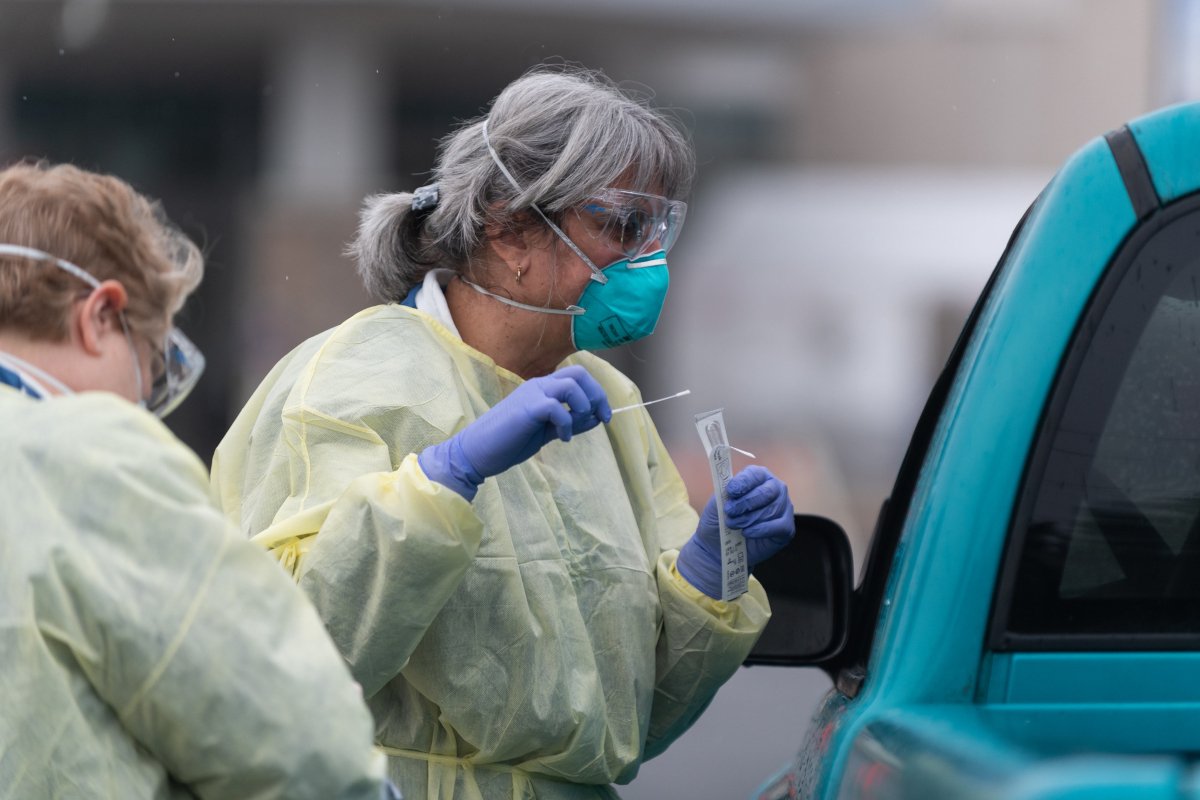Currently, there are three different types of tests to determine whether someone has COVID-19 or has previously been infected. The molecular test, also known as the PCR — short for polymerase chain reaction — is considered to be the most accurate in detecting viral particles. Although samples for the molecular test can be collected from saliva, a nasal swab inserted far back in the nostril — a procedure called a nasopharyngeal swab — remains the preferred way to collect samples.
“The sensitivity of the test is much better when you get that deeper specimen,” said Dr. Catharine Paules, an infectious diseases physician at Penn State Health Milton S. Hershey Medical Center. “Even though it’s uncomfortable, that’s the best way to get the test done.”
Another way to diagnose COVID-19 is with antigen testing, which identifies viral proteins in a sample, often obtained from a swab of the lower portion of the nostril or from the deeper, nasopharyngeal swab.
“These are more likely to be point-of-care tests performed on plastic card-based assays, similar to a pregnancy test where a line will show up if it’s positive for the virus,” said Dr. Melissa George, interim chair of the Department of Pathology at the Milton S. Hershey Medical Center. “But right now, only a few antigen tests have received FDA emergency use authorization, and they’re only available in small volumes.” This method is also not as sensitive as molecular tests.
A third type of test does not look for active infection, but rather for evidence — through antibodies present — that someone has had COVID-19 in the past.
Which tests are best?
If someone is concerned that they might have COVID-19, the best type of test is the nasal swab with the molecular testing, explained Paules. “That will show if you’re actively infected with the virus.”
Point-of-care molecular tests that take 15 to 30 minutes to be processed may be available at some physician offices. But because of their lower sensitivity and higher false negative rates, both Paules and George recommend tests that are processed in a laboratory. Physicians can provide patients with lab orders for the test.
Some organizations use molecular tests from saliva samples for surveillance testing efforts. These involve taking a random sample of a percentage of a particular population, such as a university’s student body, in an attempt to identify asymptomatic individuals who might have COVID-19 and could be infectious.
“If a positive individual is identified, contact tracing and appropriate follow-up can occur to potentially contain an outbreak,” George said.
The saliva is collected by spitting in a funnel test tube, usually while a medical provider is watching from a video link to make sure that enough sample is provided.
“As more data become available, saliva testing may start to be used more commonly in clinical — as opposed to just surveillance — situations,” George said.
Presently, the recommendations for when to use antibody tests are limited.
“We’re mostly using them to help us define clinical syndromes that might occur after COVID-19,” Paules said. “For example, multisystem inflammatory syndrome. It’s a serious inflammatory complication of COVID in children. One of the ways that we’ve been able to discover that and diagnose patients with it is through an antibody test.”
As far as considering the results of an antibody test to be a clean bill of health from future COVID infections, Paules advised against that.
“There’s a lot we still need to learn about the virus,” Paules said. “We need to learn if infection protects against reinfection down the road. And if it does, are antibodies the way that we measure that protection? Even if I went and had a positive antibody test today, that would not inspire me to change any of my behaviors. I would still wear a mask. I would still social distance.”
Waiting while isolating
The turnaround time for test results varies depending on the condition of the person getting tested, George said. Hospitalized patients who are tested generally will get results the same day. For outpatients, the results may take up to several days. And because the need for surveillance testing results is not urgent, those results often take several days.
If the demand for testing grows this fall and winter, the turnaround time for results may increase, regardless of the testing type, explained George.
While awaiting test results, it’s essential to continue to isolate.
“If you had some cold-like symptoms — you’re coughing, you have a fever — and you got a test, your next step should be to go home and keep to yourself until that test result comes back negative,” Paules said. “You don’t want to infect anyone else while you’re waiting for those results.”
Learn more:
- Ask Us Anything About… COVID-19 Testing
- The Medical Minute: What to expect when COVID-19 meets flu season
The Medical Minute is a weekly health news feature produced by Penn State Health. Articles feature the expertise of faculty, physicians and staff, and are designed to offer timely, relevant health information of interest to a broad audience.



